Japanese Carved Ivory Okimono Vanitas of a Skull
A Small Japanese Carved Ivory Okimono Vanitas of a Skull with Chrysanthemum Shape to Base
Meiji Period Late 19th Century
Size: b. 2cm high, 2cm wide, 2.5cm deep - ¾ ins high, ¾ ins wide, 1 ins deep
Meiji Period Late 19th Century
Size: b. 2cm high, 2cm wide, 2.5cm deep - ¾ ins high, ¾ ins wide, 1 ins deep
A Small Japanese Carved Ivory Okimono Vanitas of a Skull with Chrysanthemum Shape to Base
Meiji Period Late 19th Century
Size: b. 2cm high, 2cm wide, 2.5cm deep - ¾ ins high, ¾ ins wide, 1 ins deep
Meiji Period Late 19th Century
Size: b. 2cm high, 2cm wide, 2.5cm deep - ¾ ins high, ¾ ins wide, 1 ins deep
Skulls and skeletons have more than one meaning in Japanese art and culture. As in Christian religious teachings, Buddhism also stresses that all physical beauty deteriorates, that all life is transient, and so it is better not to be vain, but to seek spiritual growth instead. As well as acting as ‘vanitas’ skulls and skeletons also represent ghosts in Japan. Some netsuke artists carved them to demonstrate their mastery of anatomy.
Ex Private English collection
Japanese Carved Ivory Okimono Vanitas of a Skull
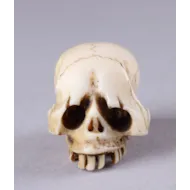
SOLD
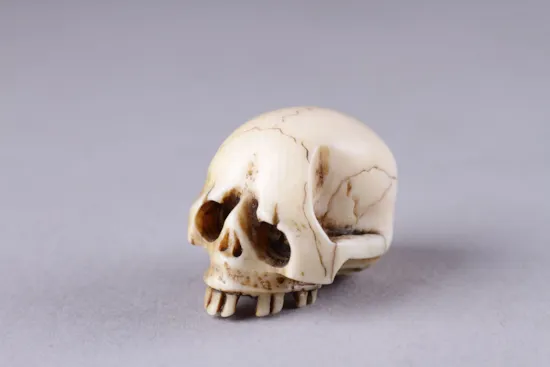
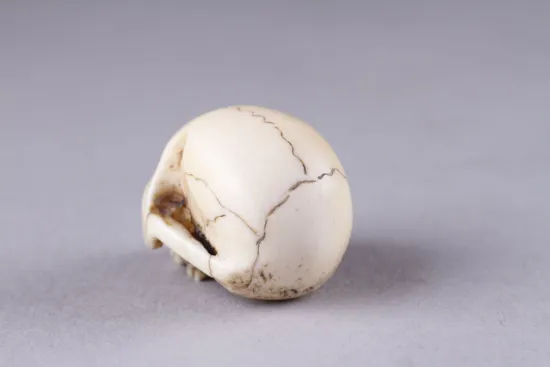

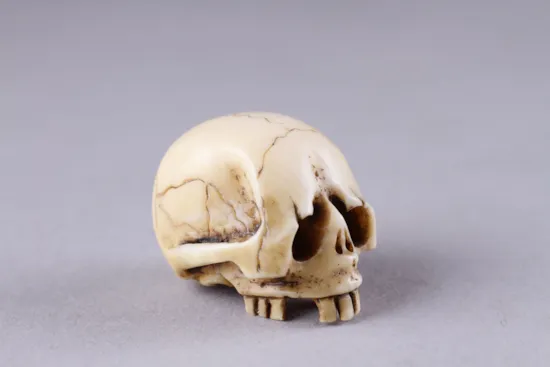
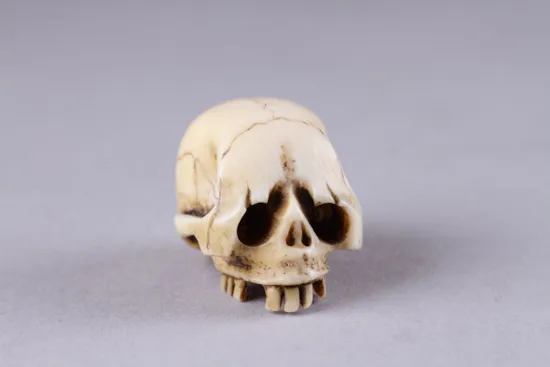





YOU MAY ALSO LIKE


